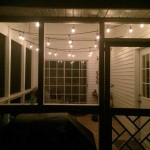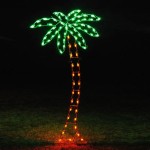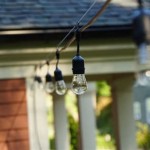Outdoor Photography Lighting Tips and Tricks
Outdoor photography offers a vast array of lighting scenarios, from the soft glow of a sunrise to the harsh glare of midday sun. Mastering these natural light conditions is crucial for capturing stunning images. This article explores essential tips and tricks to elevate your outdoor photography skills.
1. Understanding Natural Light
Natural light is the foundation of outdoor photography. It's dynamic, constantly changing throughout the day, and influenced by weather conditions. Understanding its nuances is key to capturing ideal photographs.
Golden Hour: The hour after sunrise and the hour before sunset are known as the "golden hour" for their warm, soft light. This time offers long shadows, rich colors, and a balanced exposure, ideal for portraits and landscapes.
Blue Hour: The period shortly before sunrise and after sunset, known as the "blue hour," features a cool, bluish light, creating a serene and ethereal atmosphere. This time is ideal for capturing cityscapes, water reflections, and dramatic skies.
Midday Sun: While often considered harsh, midday sun can be used effectively by incorporating natural reflectors like white walls or clouds to soften light. This creates a high-contrast look, suitable for capturing textures and details.
Overcast Conditions: Overcast skies provide soft, diffused light, ideal for portrait photography as it minimizes harsh shadows and creates even lighting.
Backlighting: Shooting with the sun behind your subject creates a dramatic silhouette effect, highlighting their outline and adding depth to the image. However, it requires careful exposure adjustments to prevent blown-out highlights.
2. Harnessing the Power of Light
Once you understand the characteristics of natural light, the next step is to harness its power. This involves using various techniques to manipulate light and achieve desired effects.
Exposure: Adjusting your camera's aperture, shutter speed, and ISO controls the amount of light entering the sensor. Understanding these settings and their impact on exposure is fundamental for capturing well-balanced photographs.
White Balance: Natural light varies in color temperature, influencing the overall tone of your image. Adjusting the camera's white balance ensures colors are accurately represented.
Reflectors and Diffusers: These tools manipulate light directly, softening shadows and enhancing highlights. Reflectors bounce light back onto the subject, while diffusers soften its intensity. Utilizing these tools can significantly improve your control over lighting.
Fill Flash: Using a small flash unit as fill light can balance the shadows created by harsh sunlight, particularly in portraits. This technique adds subtle detail and helps preserve natural colors.
3. Compositional Considerations
Lighting is a crucial element for capturing breathtaking outdoor photographs, but it's not the only factor. Composition plays an equally important role in guiding the viewer's eye and creating a compelling story.
Rule of Thirds: This fundamental principle suggests dividing the frame into nine equal squares and placing points of interest along the intersection lines. This creates a visually pleasing arrangement, leading the viewer's eye through the image.
Leading Lines: Using natural elements like roads, rivers, or fences to guide the viewer's eye towards the subject adds depth and visual interest to the composition.
Depth of Field: Adjusting the aperture controls the depth of field, determining how much of the scene is in focus. A shallow depth of field isolates the subject against a blurred background, creating a sense of depth and drawing attention to the main element.
Framing: Utilizing natural elements like tree branches, windows, or doorways to frame your subject within the composition adds context and creates a sense of depth and perspective.
By mastering these lighting tips and tricks, you can capture the beauty of nature and create captivating images that tell a story. Remember, the most successful outdoor photographers constantly experiment with different lighting conditions, techniques, and compositions. With practice and dedication, you can elevate your outdoor photography skills and achieve exceptional results.

How To Mix Ambient Light And Fill Flash For Outdoor Portraits

11 Outdoor Portrait Photography Tips For Easy Shots

Help The Sun Using Artificial Light In Outdoor Photography Learn By Zoner Photo Studio

11 Outdoor Portrait Photography Tips For Easy Shots

The Best Lighting Tips For Outdoor Photography Cool

Outdoor Portrait Lighting Tutorial And Demo For Beginner Photographers

Lighting Gear For Outdoor Portraits B H Explora

The Best Lighting For Outdoor Photography Focus

11 Outdoor Portrait Photography Tips For Easy Shots

How To Mix Ambient Light And Fill Flash For Outdoor Portraits
Related Posts







